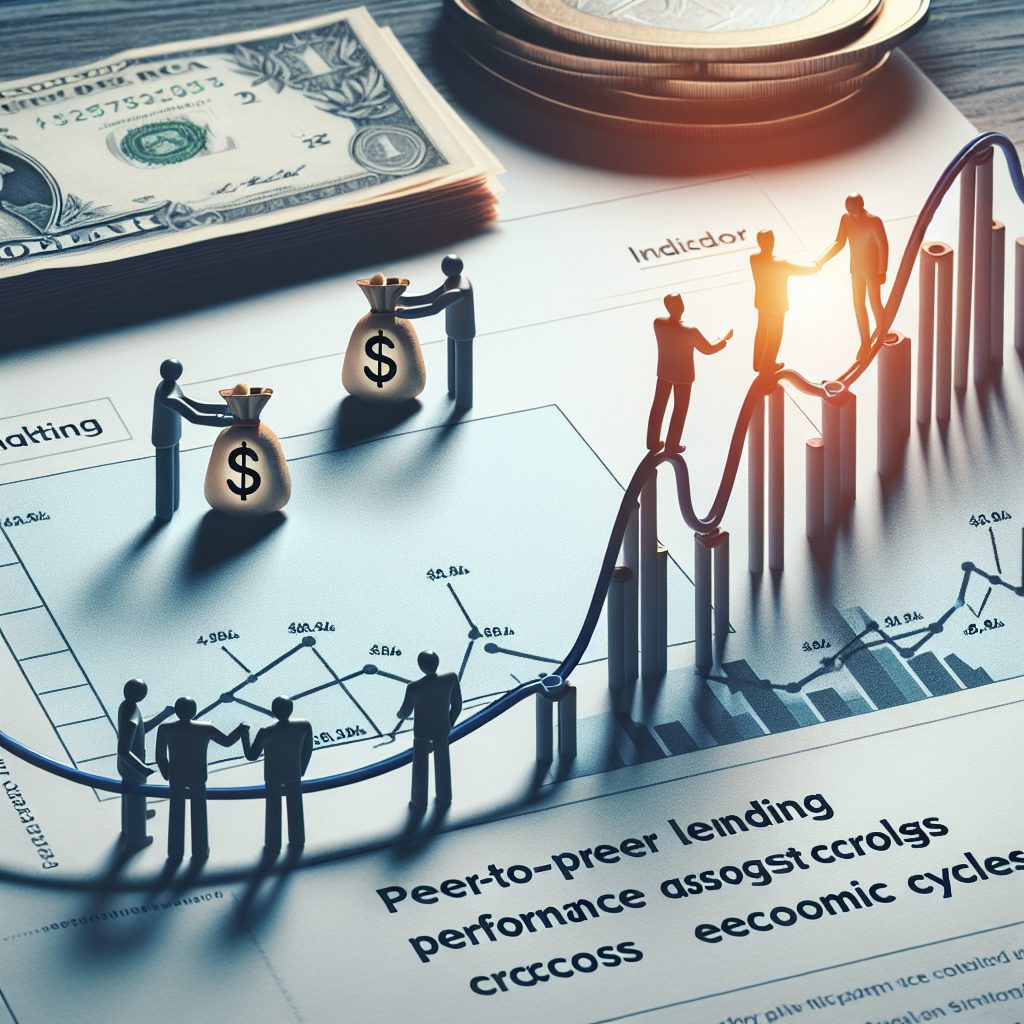In the world of finance, peer-to-peer lending has emerged as a game-changer. It’s transformed how individuals borrow and invest money. But how does this innovative form of lending fare when the economic tides turn? That’s what we’re diving into. We’ll explore the resilience and performance of P2P lending platforms throughout different economic phases. Whether you’re an investor eyeing alternative markets or a borrower seeking options, you’re about to uncover some critical insights.
Ever wondered if your investments can weather the storm of a downturn? Or if borrowing from a P2P platform is a smart move in shaky times? Stick around, because we’re going to shed light on just that. You’ll learn how economic cycles play with the dynamics of peer-to-peer lending, influencing both risks and returns. With clear, jargon-free language, we’re unraveling the complexities of financial trends. So let’s jump in and get savvy about navigating these waters, whether they’re calm or choppy.
Important Highlights
1. Peer-to-peer (P2P) lending platforms have demonstrated resilience in the face of economic fluctuations, adapting their risk assessment models to account for evolving market conditions. These adaptations are crucial for maintaining investor confidence and ensuring the continued growth of the P2P lending sector.
2. The return on investment from P2P loans tends to fluctuate with broader economic cycles. During periods of economic prosperity, borrowers typically have higher liquidity, leading to lower default rates and better returns for lenders. Conversely, during downturns, default rates increase, which can affect investors’ yields negatively.
3. Credit risk evaluation is a cornerstone of successful P2P lending across different economic cycles. Enhanced credit scoring algorithms that incorporate real-time data and more sophisticated risk metrics help platforms better predict borrower defaults, thus safeguarding investments.
4. Diversification remains a key strategy for P2P investors aiming to mitigate risks associated with economic turbulence. By spreading investments across various loans with different risk profiles, lenders can reduce their exposure to potential losses from any single borrower’s default.
5. In-depth research has highlighted the importance of regulatory frameworks in stabilizing the P2P lending market. Effective regulation ensures transparency and protects both borrowers and lenders, contributing to a more robust and reliable lending environment across various economic conditions. For further insights into financial regulations and their impact on markets, the U.S. Securities and Exchange Commission offers extensive resources and guidelines.
Impact of Economic Downturns on Peer-to-Peer Lending
In the face of economic downturns, peer-to-peer (P2P) lending platforms often encounter shifts in consumer behavior and investor sentiment. Borrowers may seek alternative financing sources when traditional banks tighten credit, potentially leading to an upsurge in loan applications within P2P networks. Conversely, investors might exhibit risk aversion, reducing the capital available for loans. This juxtaposition can affect loan origination volumes and interest rates, as platforms adjust to balance supply and demand while managing default risks.
Risk Assessment Strategies in P2P Lending
P2P lending platforms utilize advanced risk assessment tools to evaluate borrower creditworthiness, especially critical during volatile economic cycles. They employ algorithms that analyze extensive data points beyond traditional credit scores. These include employment history, education, and even social media activity. The goal is to mitigate risk exposure for lenders by accurately pricing loans according to the likelihood of repayment. Platforms that excel at integrating these comprehensive evaluations tend to maintain more robust performance metrics across different economic conditions.
Liquidity Concerns During Market Fluctuations
Lenders on P2P platforms must be cognizant of liquidity risks. During economic peaks, liquidity is generally high with active investors and borrowers facilitating quick loan funding and repayments. However, market downturns can trigger a liquidity crunch as investors withdraw funds or become more selective, lengthening funding times and possibly increasing defaults. Platforms must have strategies in place to ensure sufficient liquidity to cover loans and withdrawals without compromising operational integrity.
Influence of Interest Rates on P2P Investments
The performance of P2P lending is also sensitive to fluctuations in interest rates. When central banks alter rates to manage economic growth, it ripples through the P2P sector by affecting borrower affordability and investor returns. A rise in interest rates typically increases borrowing costs on the platform, which could deter some borrowers but provide higher yields for investors. Platforms must adeptly navigate these changes to remain attractive for both parties.
Adaptability of P2P Platforms in Economic Cycles
P2P platforms that demonstrate adaptability by offering flexible loan terms or restructuring options tend to better withstand economic swings. By providing relief measures such as payment holidays or adjusted interest rates during tough times, they support borrower retention while preserving investor confidence.
Regulatory Environment’s Role in Stabilizing P2P Lending
The regulatory environment plays a crucial role in stabilizing the P2P lending sector throughout varying economic states. Robust regulations help prevent market abuse and protect both borrowers and lenders, fostering a trustworthy ecosystem that can endure economic turbulence.
Diversification Benefits for Investors
Savvy investors understand the importance of diversification within their P2P lending portfolios. By spreading investments across various loans with differing risk profiles, they can mitigate potential losses due to defaults during economic downturns while still capitalizing on higher-yield opportunities during growth periods.
Data Transparency and Performance Tracking
Data transparency is vital for assessing P2P lending performance across economic cycles. Platforms that provide real-time access to performance analytics empower investors to make informed decisions based on trends and individual loan tracking.
How Can Investors Enhance Their P2P Lending Strategy?
- Analyze historical data on default rates across various economic phases to gauge potential risks.
- Maintain a diversified portfolio that includes loans with different risk levels and maturity dates.
- Stay informed about macroeconomic indicators that could signal changes in borrower behavior or investment climates.
- Utilize auto-invest features with defined criteria to efficiently allocate funds across suitable loans.
- Regularly review your investment strategy against current market conditions and adjust accordingly.
- Consider the impact of tax liabilities on your returns from P2P lending activities.
- Engage with community forums or expert discussions for insights into emerging trends within the P2P industry.
Frequently Asked Questions
How does an economic downturn affect peer-to-peer lending?
In times of economic slowdown, borrowers may face difficulties in repaying loans, potentially leading to higher default rates. Lenders should be prepared for an increased risk during these periods.
Can peer-to-peer investments still thrive during a recession?
Yes, while there are challenges, diversification and careful selection of loans can help investors navigate through tough economic times and possibly yield returns.
What indicators should I watch to assess the health of my P2P investments?
Keep an eye on default rates, the performance of similar loans, and changes in interest rates. These factors can signal the stability or volatility of your peer-to-peer lending portfolio.
Do interest rates on P2P platforms fluctuate with market cycles?
Absolutely. Interest rates on P2P lending platforms often adjust to reflect the current economic climate and compensate for the level of risk during different market cycles.
Is diversification important for P2P lending across economic cycles?
Diversification is crucial. Spreading investments across various loans and risk categories can provide a buffer against potential losses during downturns.
How do peer-to-peer platforms manage risk during economic shifts?
P2P platforms may tighten credit assessments, adjust interest rates, or increase reserves to better manage risk when economic conditions change.
What’s the role of loan duration in P2P lending performance?
The length of a loan can impact its vulnerability to economic cycles; short-term loans may be less exposed to long-term market fluctuations than longer-term loans.
Are secured loans safer during an economic downturn?
Secured loans generally offer more protection since they are backed by collateral that can be liquidated if a borrower defaults, reducing potential losses.
How can I monitor the performance of my P2P investments effectively?
Utilize analytics tools provided by your platform, review your portfolio regularly, and stay informed about broader economic trends to monitor your investment’s performance.
Should I expect lower returns from P2P lending in a bad economy?
Potentially yes. Due to higher risks and possible increased defaults, lenders might experience reduced returns as borrowers face financial strain in tough economies.
Closing Thoughts on Peer-to-Peer Lending Through Economic Changes
Navigating the ebbs and flows of peer-to-peer lending requires understanding how economic cycles influence risk and return. By staying vigilant and employing strategic diversification, investors can work toward weathering financial storms. Recessions pose challenges but also present opportunities for those adept at adapting their strategies to shifting market dynamics.
Maintaining a dynamic approach towards investment and keeping abreast of market trends is key. In essence, success in peer-to-peer lending throughout various economic climates hinges upon vigilance, adaptability, and continuous learning. The resilience thus gained not only prepares one for downturns but also positions them for growth when the economy rebounds.

